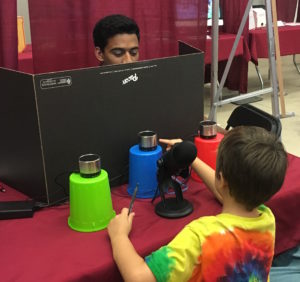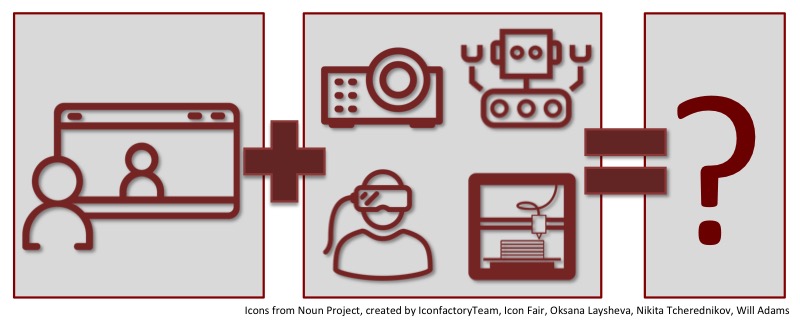“Hey Google, tell me a joke!” If you share your home with a child and any sort of a voice assistant (Google Home, Kortana, Alexa, Siri), you may be used to hearing this sort of a request. This request typically yields a groan-worthy pun, but alternative joke requests like “Do you know any good ones?,” “Knock, knock,” or “Make me laugh,” may receive the reply “I don’t know how to help with that.” It’s a shame that making artificial intelligence agents (like voice assistants) understand what you want can be so hard, because voice assistants may help children remain curious about their world and help them find answers to questions without needing to first learn spelling and typing. To find out how we can help kids use voice assistants, we asked 87 children (ages 5 – 12) to try out three prototype voice assistants at the Minnesota State Fair research facility and tell us what they thought.
First, we wanted to know whether it mattered how the prototype AI agent talked about itself and the child. Personified agents referred to themselves with a name and used the “I” pronoun (similar to Alexa), non-personified ones just asked for a question to answer (similar to Google search in your browser). Personalized agents referred to the child by name, but non-personalized ones didn’t know anything about the child. Turns out that children had a strong preference towards personified interfaces, but didn’t really care if the interface knew anything about them. In fact, some kids found it “creepy” if they agent knew their name and age!
Second, we wanted to know how children reacted when the voice assistant had trouble figuring out what they meant. We asked each child to puzzle out an answer to a question about the State Fair. To get the voice assistant to understand the question, they would have to change how the question is worded or divide the question into multiple parts. This was hard for kids! Most kids just tried to say the question louder or substitute synonyms for specific words. It took them a few tries to find a strategy that worked (and many younger kids couldn’t do it without a grown-up helping). The problem is that current voice assistants don’t provide a lot of clues about why they’re having trouble understanding a request. Thanks to the help of the kids who were in our study, we were able to come up with lots of ideas about how voice assistants can be better and more useful to children and families.
There are a lot more findings in our paper, which has recently received the Best Paper Award at IDC 2018. This work was made possible with funding from Mozilla Research Grants and Google Faculty Research Awards.


